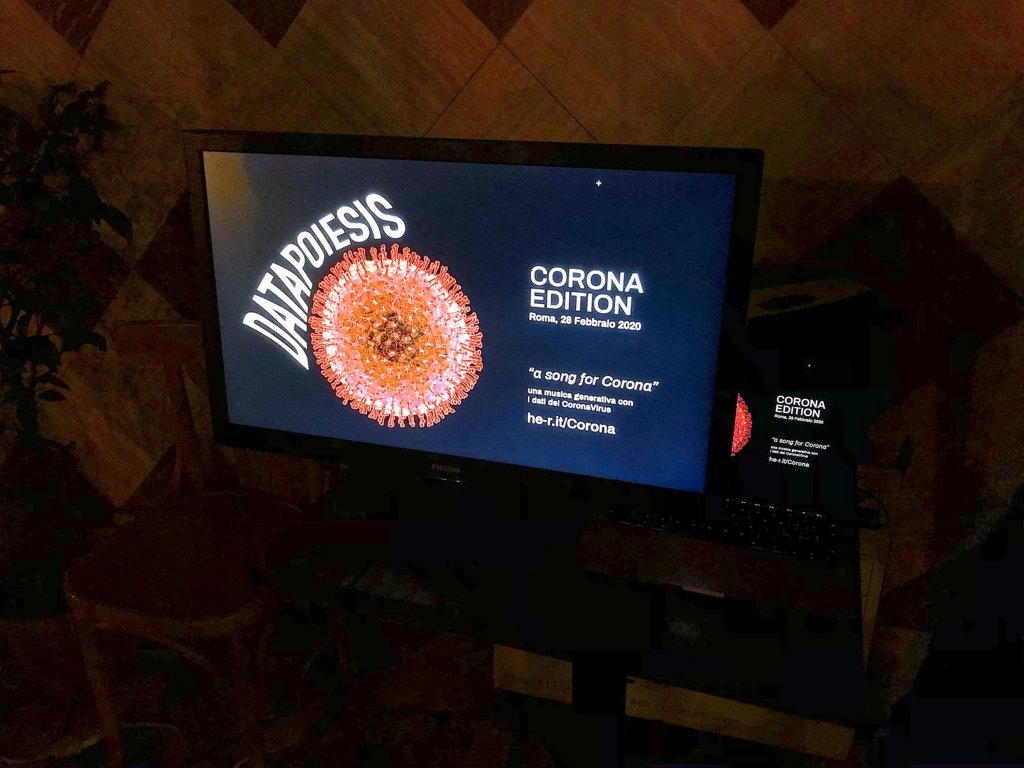Last step:
Obiettivo Roma
As the icing on the cake of a 18 month long project , so ambitious and demanding, HER had organized the Datapoiesis final step in Rome at the Farnesina Collection, housed at the Ministry of Foreign Affairs.
Indeed, OBIETTIVO, the first datapoietic artwork conceived by Salvatore Iaconesi and Oriana Persico as core of the project, became part of the Collection on the occasion of its expansion for the celebration of its twentieth anniversary.and the first copy of the work is installed on the fourth floor of the building.
On Friday 28 February at 3 pm, was scheduled a special guided visit to the Farnesina Collection in which the artists would have illustrate their “data poetics” in person, named “OBIETTIVO Roma.Datapoiesis in Collezione Farnesina.”
Unexpectedly we found ourselves in a truly emblematic and critical moment for Italy and italian culture: to prevent the spread of the coronavirus epidemic many events couldn’t take place.
It is happen at the Salone del Mobile and at the Serie A matches, ando also our event has been canceled, so much so that after a week the Italian government has decided to cancel all public and private events in the nation for a month.
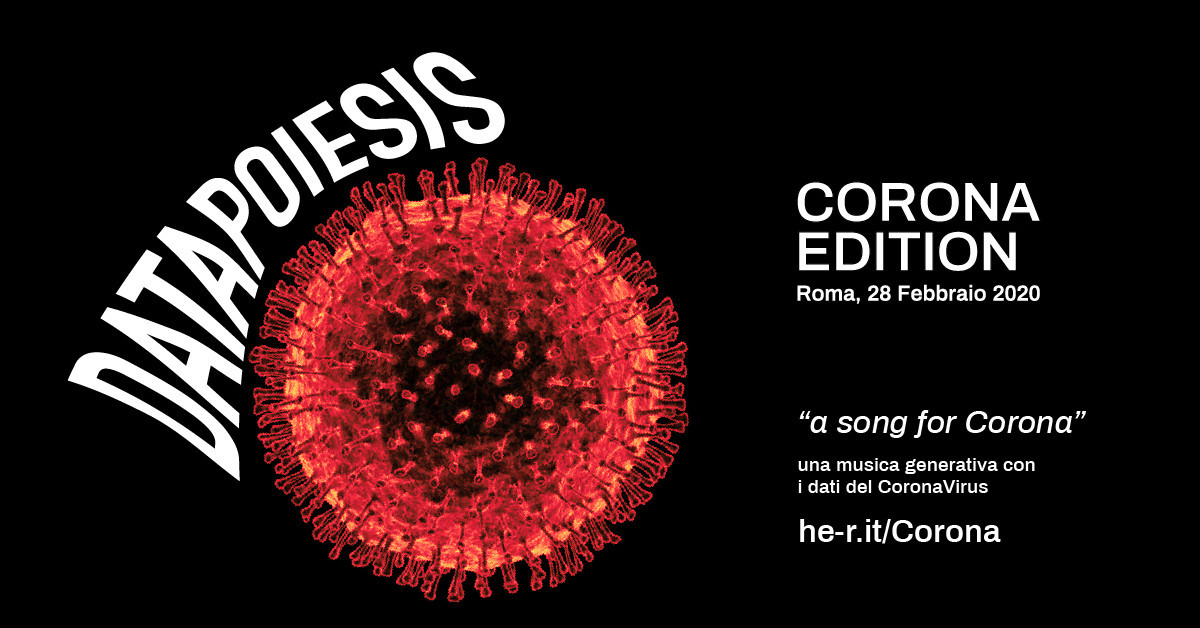
DATAPOIESIS Corona Edition
In a perfect “datapoietic mood” the Iaconesi / Persico duo, in charge of the artistic direction of the project, does not give up, and transforms him – the dreaded virus- into the protagonist of a new meeting, renamed in a ironic way: “DATAPOIESIS Corona Edition”.
The data on the spread of the virus, which in these days and weeks bounce obsessively between social bulletin boards, TV screens and pages of newspapers, become “A Song for Corona”: a data-driven melody to follow in real time the evolution of the codvid-19, from the first days of the infection.
https://he-r.it/Corona <<
. A face to face with the fear that is immobilizing the cultural activity of the country, to transform data in the opportunity to gather and imagine new rituals around knowledge, which beat in the tragic and complex heart of our globalized world.
The event was rescheduled within a day, in a bar set in the multicultural neighborhood of Torpignattara. Here visitors, friends and families came curious to understand what we were presenting.
An opportunity to get together and understand the principles of datapoiesis taking cue from an unexpected event. They could access the counting data of covid 19 through a more “friendly” and less aggressive visualization than those of the current media narrative and especially they could listen to the melody they produce and perceive them through an artistic lens.
Families and children have been particularly attracted to this “new” form to read and perceive these data they hear about every day.
At the end of the Datapoiesis project, it was necessary to create a new artwork and an unexpected way of presenting it, in order to be able to read and act in the complexity of the present.
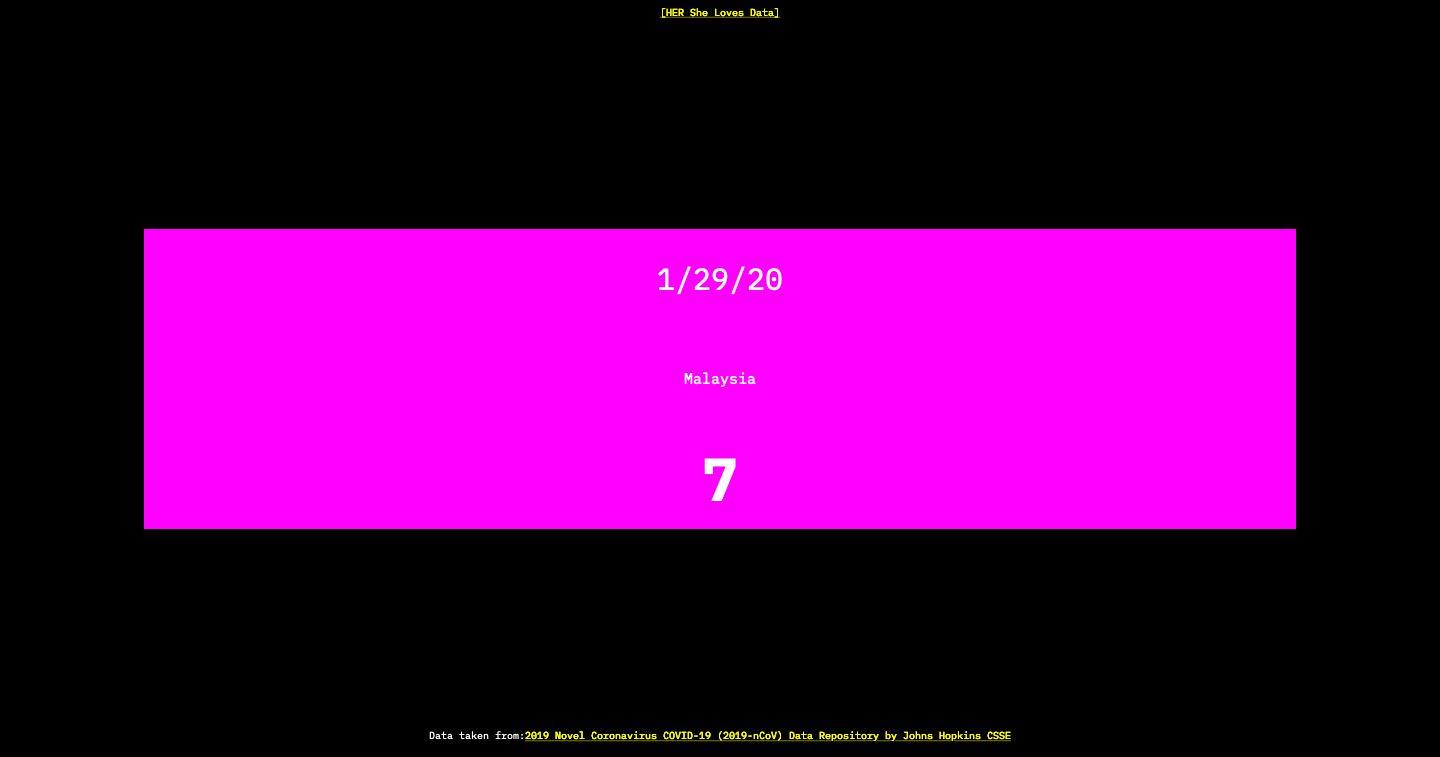
A Song for Corona: the artwork
A Song For Corona is a concept by Salvatore Iaconesi, created with the technological and scientific support of the HER research center.
It is the second datapoietic artwork created after OBIETTIVO to gather around the emergency of the Corona Virus, create awareness and reflect on the role of data in our societies.
Data source: “A song for Corona” uses the open data provided by John Hopkins University CSSE as the data source. The entire “Novel Coronavirus (COVID-19) Cases” repository is accessible at this link: https://github.com/CSSEGISandData/COVID-19.
Visualization: in the fuchsia box in the center of the screen, the date is visible at the top (dd / mm / yy); in the center the states cycle; below the number of people infected. The same data are sounded, allowing you to immerse yourself and follow the trend of contagion in the world through time and space, with two senses: sight and hearing.
The artwork can be consulted at this link and will remain on until the return of the planetary emergency:
https://he-r.it/Corona/
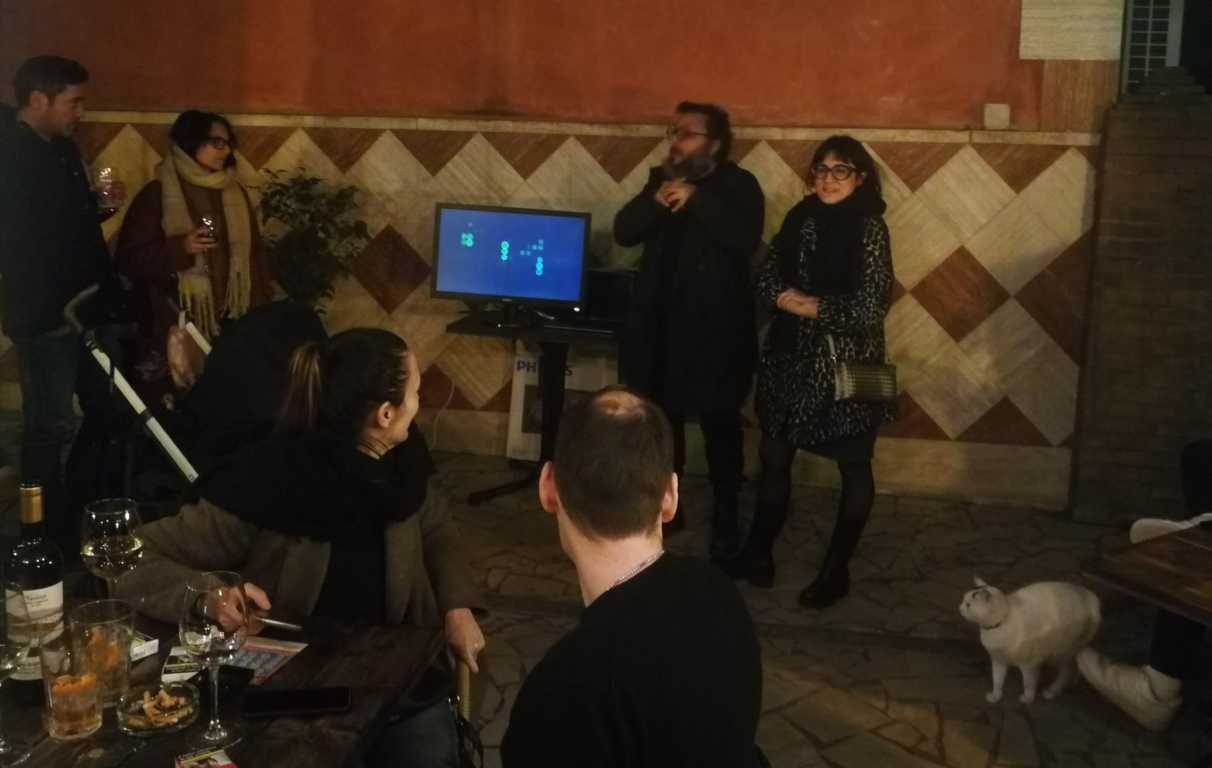
The Artist’s Point Of View
“In the era of data and artificial intelligence,” data “(its construction, computation and interpretation) remains a problematic issue, both in its essence / existence, and in its effect (and / or non-effect) in society .
The question arises as what interventions need to be implemented. It is the question that I ask myself as an artist and researcher with the concept of Datapoiesi: data, computation through art and design can create sensitivities that were not there before.
Once the Farnesina event was canceled we imagined another. “A song for Corona” is a generative performance with covid-19 data. in Torpignattara (one of the districts of Rome with the largest presence of Chinese population), we gathered around this music and we talked about this: what data, interpretations, cultural, artistic and design interventions could be combined and put in place for to improve the situation.
One of the fundamental elements of Datapoiesi is its widespread character. The data (and the researchers) are no longer in a laboratory, where scientists in lab coats first observe and then disseminate knowledge.
In Datapoiesi data and researchers are in the middle of the world, creating “totems of knowledge” around which to unite to understand and decide together what to do.
Which does not take anything away from their scientificity but strengthens it, finding more effective ways to bring them to the world, enhancing both.
We can stop treating citizens like children to tell them what to do, and treat them as partners. This, perhaps, is the biggest “revolution” (the only one, sometimes the doubt comes) offered by digital technologies: the researcher can finally leave the laboratory and live in the midst of society.
Too bad that this “revolution” is only potential, so poorly supported by public and private. “
Salvatore Iaconesi
DATAPOIESIS CORONA EDITION: VIDEO AND PICTURES
At this link the performance’s FB live streaming https://www.facebook.com/Datapoiesis/videos/2712785328977274/
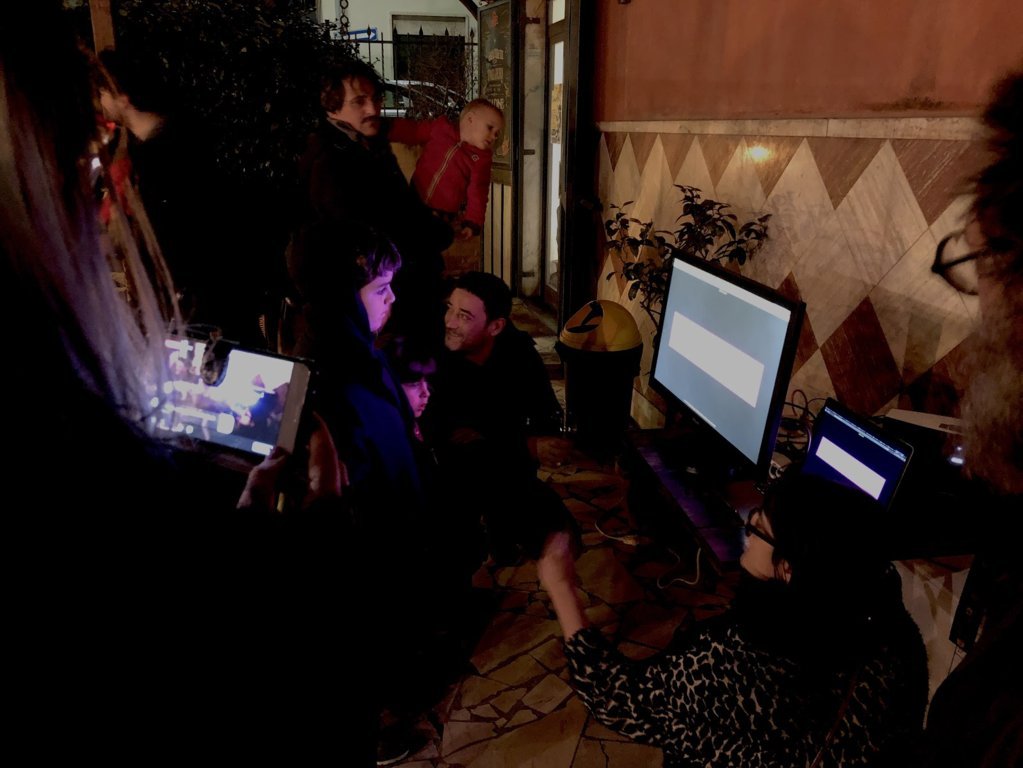
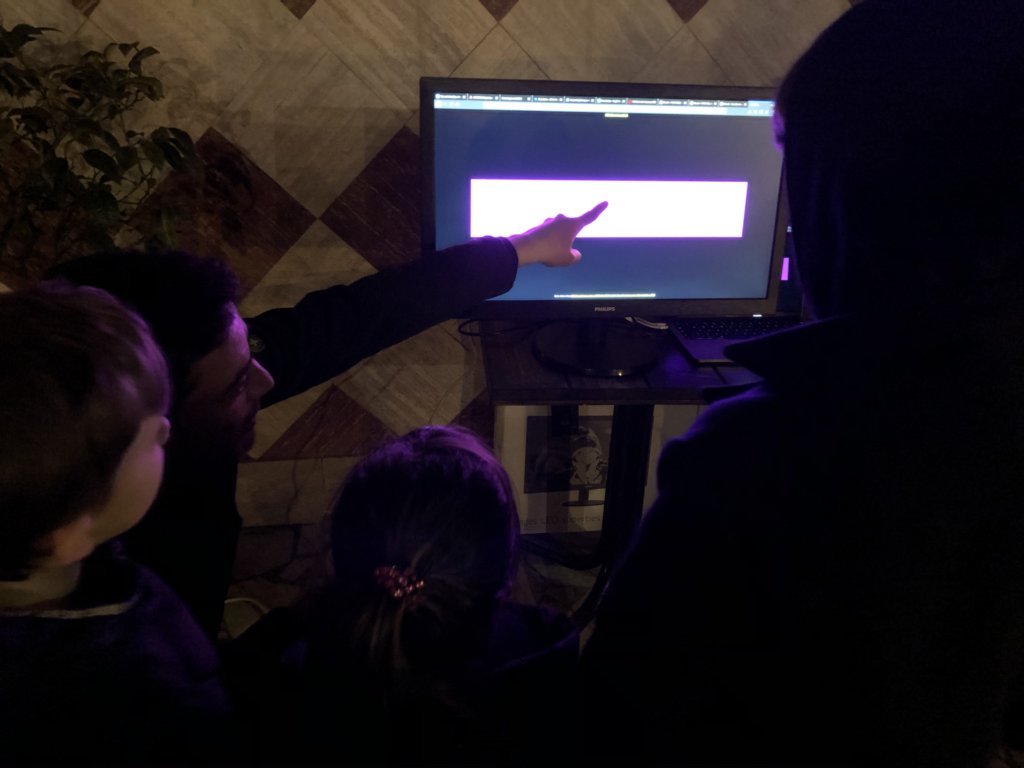
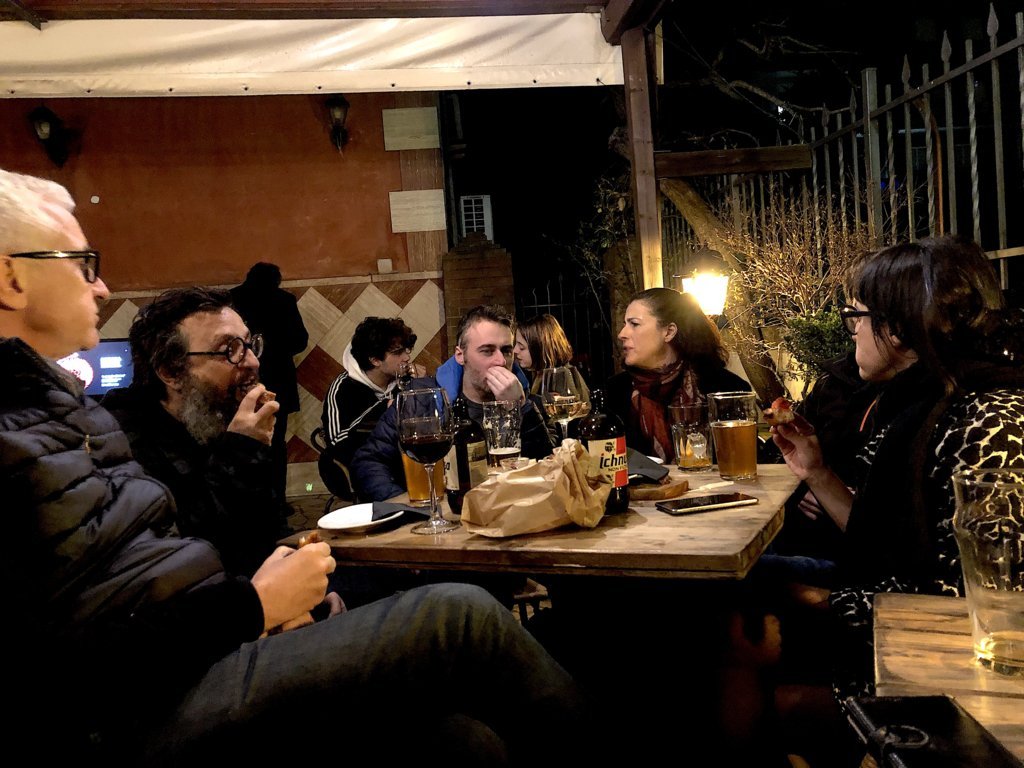
Photos by Marco Stancati
